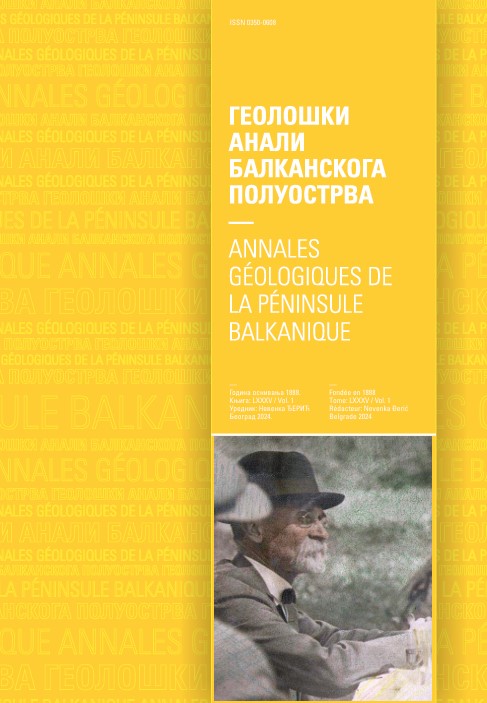Middle to Late Jurassic pelagites and gravity mass flow deposits of a displaced Neotethyan margin: microfacies and biostratigraphical studies in Northeast Hungary
Abstract
Microfacies, depositional age and sedimentary environment were characterised for two Jurassic successions, which were deposited on the Adriatic microcontinental margin of the Neotethys Ocean. Investigations were carried out mostly on cores drilled in the Mesozoic basement of the eastern part of the Mátra Mountains (Recsk area) and the westernmost part of the Bükk Mountains, NE Hungary. This area represents the continuation of the Inner Dinaric nappe-system, and was displaced along the Mid-Hungarian Shear Zone during the Late Oligocene to Early Miocene. The pre-Cenozoic basement of the area is characterised by three juxtaposed units: the lowermost Recsk Succession, the Tarna Olistostrome and the topmost Darnóhegy Mélange nappe. The Recsk Succession is made up of Upper Triassic, cherty carbonates of pelagic basin facies that is overlain by pelagic limestones of Early to early Middle Jurassic age. The carbonate sedimentation changed gradually into shale-dominated one during the late Bathonian to the early Callovian. In the Bajocian to early Callovian interval the Recsk area was located at the toe of a coeval carbonate platform, which provided gravitational mass flows reaching the investigated area. The external margin of this platform drowned and got covered by the pelagic shale in the late Bajocian. The Tarna Olistostrome is built up by a Tithonian pelagic mixed carbonatic and siliciclastic succession with breccia/olistostrome horizons. The clasts derived from the Upper Permian–Lower Jurassic succession of a distal Adriatic margin. The Darnóhegy Mélange is a typical sub-ophiolitic mélange comprising scrapped off blocks and slices from the lower plate and gravitationally redeposited / tectonically sheared blocks from the overriding ophiolite nappe. The age of the mélange is Callovian– Oxfordian. These inferences may serve as a base for new geodynamic evaluations of the studied region.
Copyright (c) 2024 Geološki anali Balkanskoga poluostrva

This work is licensed under a Creative Commons Attribution 4.0 International License.









